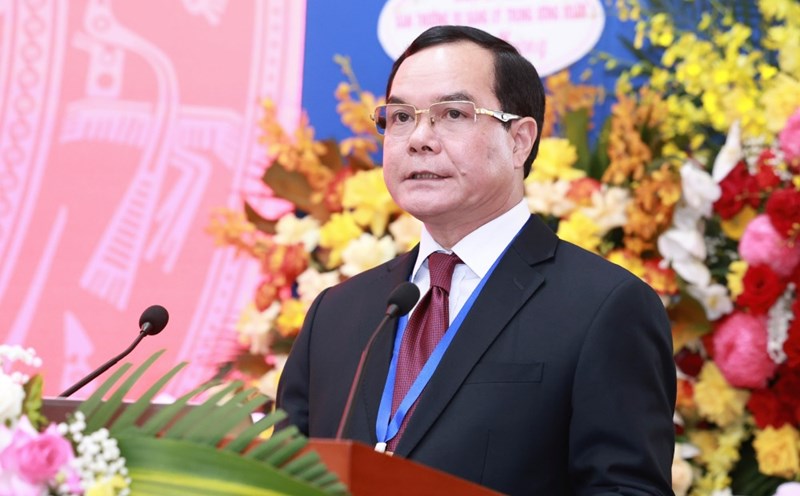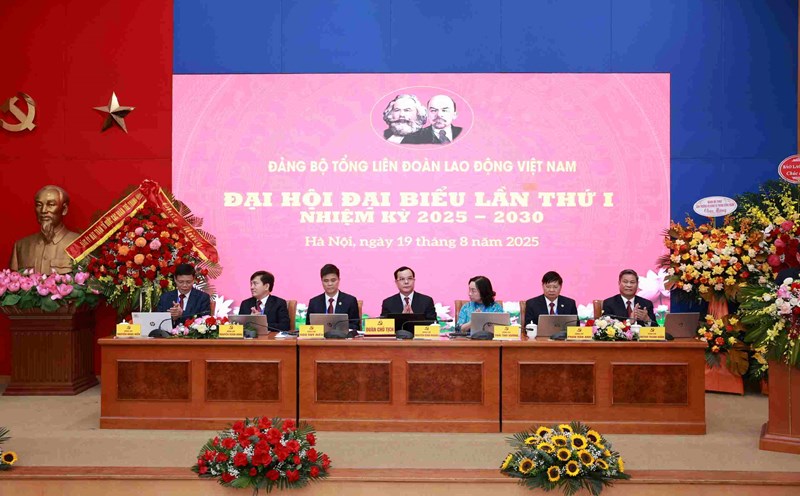In the historical process of Vietnam, the working class has always been the pioneer force of the Vietnamese Revolution.
100 years of the struggle for Ba Son
August 2025 is the 100th anniversary of the struggle of Ba Son craftsmen in Saigon - Cho Lon (now Ho Chi Minh City). This is considered one of the milestones of the Vietnamese working class in the early days of the revolution.
Before the 15th century, Vietnam did not have favorable conditions for the development of industry, trade and commodity economy, but there was a class of craftsmen. In the 15th and 16th centuries, the team of "Handed laborers" appeared. In the early 19th century, the mining industry developed and thousands of "medictors" worked in coal and tin mining mines. But that is not a modern worker, producing in an industrial chain.
The Vietnamese working group appeared during the first exploitation of the site (from 1897 to 1914) by French colonialism. The concentrated industrial parks in Hanoi, Saigon, Hai Phong, Nam Dinh, Vinh-Ben Thuy, Hon Gai have caused a rapid increase in the number of workers... The number of workers in 1906 is 49,500 people, including 1,800 skilled workers.
In 1921, worker Ton Duc Thang joined the movement to establish Ba Son Trade Union. The purpose of the association is to fight to defend the rights of workers, fight against capitalist empire. The Red Labor Union became the soul of the workers' labor movement in Ba Son, Saigon - Cho Lon in the years 1920-1925, typically the labor movement of Ba Son workers in August 1925.
At that time, Ba Son was the only workshop in Indochina where workers were entitled to an 8-hour working day, with monthly and daily salaries higher than in other places, so moving the construction site here was very dangerous and very difficult. But apart from the attack, there was no way to stop the French warship Michilet. The striking leadership has submitted a petition to the director to resolve the following requirements: Increase wages for all workers to 20%; must recall the number of workers who were fired in previous strikes to work again; and must take a break half an hour before the usual salary date.
Although Director Courthial and Governor Nam Ky threatened, then lured, and accepted bribes, the workers were not discouraged and continued to go on strike. Finally, the Ba Son workshop's Board of Directors was forced to make a concession and consult with the strike's leadership, accept a 10% salary increase for workers and abandon the 15-minute cut order to compensate for the salary day. The construction site ended successfully, the workers switched to the form of a construction site, extending the repair time of the warship. It was not until November 28, 1925, that the Michelet warship left the Ba Son workshop, after being detained there for three and a half months.
The struggle with clear political purposes, but took place tactfully under another slogan. The echoes of this struggle have gone beyond the national scale, to the world's revolutionary movement of the produceless and workers.
From the Bac Ky Red Cross Festival to the birth of the Communist Party of Vietnam
The strong development of the workers' movement and the patriotic movement from 1925 to 1929 was a decisive condition for the birth of communist organizations and Red Trade Unions in Vietnam, especially the birth of the Communist Party of Vietnam in the early 1930s.
The formation and development of the Northern Red Trade Union is closely linked to the activities of leader Nguyen Ai Quoc in the early decades of the 20th century, who laid the foundation and theoretical basis for the emergence of mass organizations of the Vietnamese working class.
In June 1925, Nguyen Ai Quoc founded the Vietnam Revolutionary Youth Association in Guangzhou-China and directly taught its members. In the book "The Road of Life and Life", it is mentioned the nature and task of the Trade Union: "Organizing the Trade Union is first to let workers travel together to have feelings, second to study together, third to improve the way workers live to be better now, fourth to preserve the rights of workers, third to help the nation, help the world". After studying theory, most members returned home to work, developing mass organizations such as parties, parties, family gatherings... into congresses.
Since 1928, the struggle movement of Vietnamese workers has become increasingly vibrant, promoting the development of the Trade Union organization in both form and content of activities and becoming a revolutionary trade union organization of the working class.
In industrial parks in the Northern provinces, many enterprises have held trade unions such as: Diem Factory, aviat Automobile Repair Company (Hanoi), Fiber Factory, Cement Factory (Hai Phong), Hon Gai, Quang Yen (Quang Ninh mine area) ... Workers working at wharves and terminals also have trade unions. In the South, the Trade Union has also been formed and operated, mainly in the Saigon - Cho Lon industrial parks and rubber plantations.
In 1929, the workers' movement and trade union activities in our country developed vibrantly, especially in the North. Workers' struggles have broken out continuously in many factories, with close coordination and unified actions between struggles in one factory and another in the same locality, between these localities and other localities across the country, combined with the movement to fight against taxes by farmers, townhouses by traders, and schoolyards by students.
In March 1929, the first communist youth union was established in Hanoi. On June 17, 1929, the Communist Party of Indochina was born and took the workers' movement as the core of the revolutionary movement, taking the workers' mobilization as the center of the Party's work, the Party sent a series of cadres to factories, mines, and held the Trade Unions established by the Vietnam Youth Revolutionary Association in advance to propagate communism, disseminate the principles and purposes of the Charter of the Red Trade Union, and select the masses to actively join the Red Trade Union.
In order to further promote the work of mobilizing workers to strengthen the unity in organization and action of the Trade Union organization, the Provisional Central Executive Committee of the Communist Youth Union of Indochina decided to organize the 1st Conference of the Northern Red Trade Union on July 28, 1929. The conference was held at the headquarters of the Bac Ky General Confederation of Labor, No. 15 Hang Non Street - Hanoi. The Congress was attended by delegates from the General Confederations of Labor of the provinces and cities: Hanoi, Nam Dinh, Hai Phong, Dong Trieu and Mao Khe mining areas. July 28 also becomes the founding day of the Vietnam Trade Union.
The Congress elected the Provisional Central Executive Committee of the Red Trade Union led by Comrade Nguyen Duc Canh, member of the Provisional Central Executive Committee of the Communist Party of Indochina. The Congress also approved the program and Charter of the Red Club and decided to publish the Labor Newspaper (the first issue appeared on August 14, 1929, headed by comrades Nguyen Duc Canh and Tran Hoc Hai). The provisional Executive Committee also includes comrades: Tran Hong Van, Tran Van Cac, Nguyen Huy Thao, Nguyen Van Doai...
The establishment of the Bac Trieu Red Trade Union has great significance for the Vietnamese workers' movement. That is both an inevitable result of the quality maturity of our country's workers' movement, and a victory of the propaganda policies of Nguyen Ai Quoc and the Indochinese Communist Party, while also meeting the urgent need for organization of the Vietnamese workers' movement. The establishment of the first trade union organization of the Vietnamese working class contributes to the growth of the international workers' communist movement.
On February 3, 1930 the Communist Party of Vietnam was born with the first political platform, opening a new period for the Vietnamese revolution - the period of struggle for national independence towards socialism. The first guiding principle of the Party was born, identifying the most basic contents of the Vietnamese revolutionary path; meeting the urgent needs of history and becoming a flag of gathering, united communist organizations, revolutionary forces and the entire nation.
This event also shows the results of combining Marxism-Leninism with the workers' movement and the Vietnamese patriotic movement; proving that the Vietnamese working class is mature and capable of leading the revolution.











